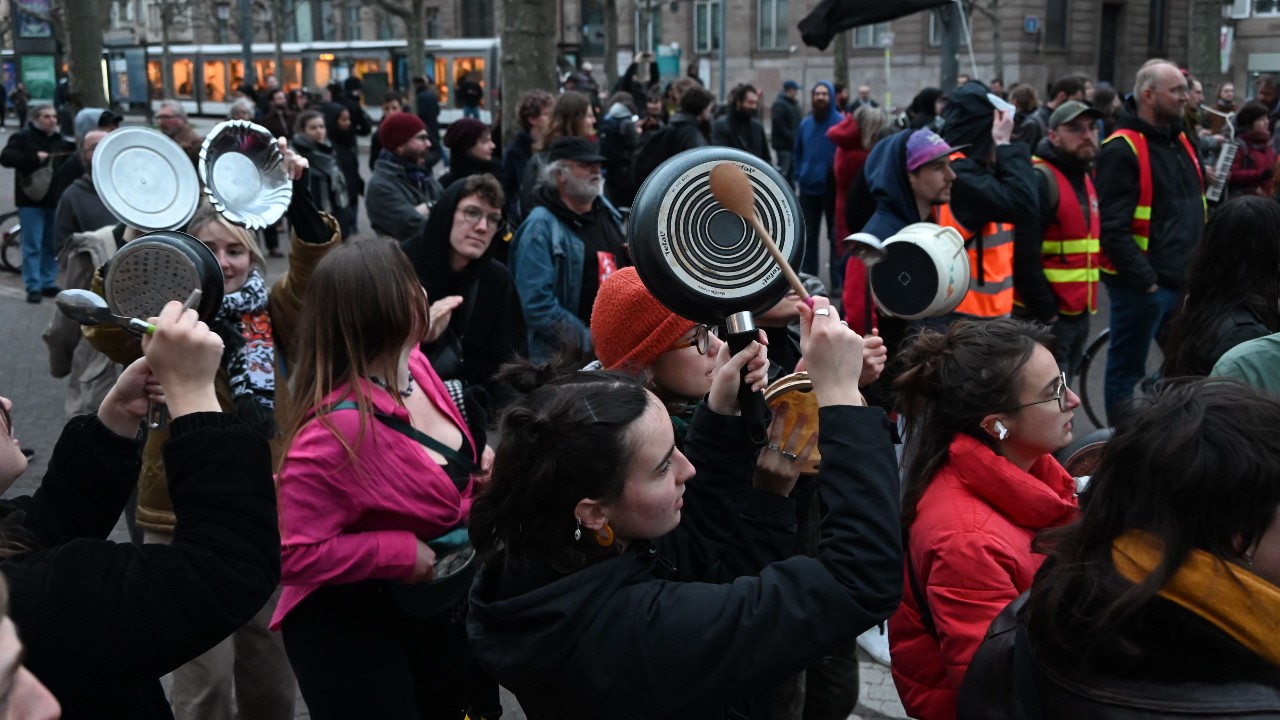00:51

French President Emmanuel Macron's recent public appearances have been met with a clamor of pot-clanging by demonstrators furious over his decision to hike the retirement age.
But why the clanging? As authorities try to put the lid on the protests, here's how the humble kitchen utensil became a global symbol of resistance…
Bashing the French king
The saucepan's second life as a symbol of politically charged protest began in 1830s France after the July Revolution that led to the abdication of Charles X.
Republicans opposed to the new king, Louis Philippe, "sought to make their voices heard by borrowing from reality a customary ritual" known as charivari, or making loud noise, French historian Emmanuel Fureix explained to France Culture radio in 2017.
READ MORE
French pension reform: What is it and can it be stopped?
After Quran-burning protest, Türkiye blocks Sweden NATO bid
Soup, milk, paint: London's eco protest weekend
The ritual dated from the Middle Ages, when villagers sought to humiliate an ill-matched marriage – generally a widower to a much younger bride – with a thundering concert of charivari, known in colloquial French as casseroles.
Hullabaloo in Latin America
The saucepan's leap to global usage came in the 20th century.
In the 1950s and 1960s there was pot-bashing in Algeria during the country's war of independence, by supporters of the French far-right paramilitary group OAS who wanted to keep the country French.
But the pot only really began to make a racket when it crossed the Atlantic to Latin America, where the ear-splitting tradition of mass cacerolazos – banging pots with wooden spoons or bashing them together like cymbals – was born.

Railing against President Macron, a demonstrator in Strasbourg continues the centuries-old tradition of protesting by banging on kitchen pots and pans. /Frederick Florin/AFP
Railing against President Macron, a demonstrator in Strasbourg continues the centuries-old tradition of protesting by banging on kitchen pots and pans. /Frederick Florin/AFP
The first major breakout came in 1971 in Chile against food shortages during the regime of Salvador Allende. Forty years later, tens of thousands of pot-bangers took to the streets of Buenos Aires after finding themselves cut off from their bank savings in the midst of a severe economic crisis.
Since then the saucepan has been a tool of protest across the globe, from Myanmar to Canada.
Pots in the closet
Now the pots have come full circle, loudly returning to prominence in France to express discontent with politicians and policies.
In 2017, the campaign rallies of conservative presidential candidate Francois Fillon drew sporadic saucepan protests, in a play on the French expression trainer des casseroles – skeletons in the closet.
Fillon's "saucepans" related to a scandal that would scupper his candidacy and land him with a jail sentence, when it was revealed he had given his wife a fake job as a parliamentary assistant.

The tradition is said to have its roots in public humiliation, and has spread around the world. /Frederick Florin/AFP
The tradition is said to have its roots in public humiliation, and has spread around the world. /Frederick Florin/AFP
Six years later, Macron's widely unpopular pension reforms have elicited a frenzied new chorus of pot-banging.
Pot concerts were organized countrywide on Monday evening to drown out the president when he addressed the nation after signing into law a bill that raises the retirement age from 62 to 64.
On Thursday, authorities in the southern Herault region announced a ban on "portable sound equipment" ahead of the president's visit to the area.
While the move may force protesters to leave their pots in the kitchen, smartphone apps such as iCacerolazo and Cassolada 2.0 that reproduce the metal clanging suggest they won't be easily silenced.
Subscribe to Storyboard: A weekly newsletter bringing you the best of CGTN every Friday
Source(s): AFP